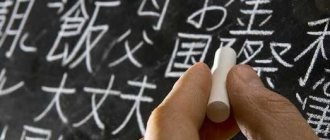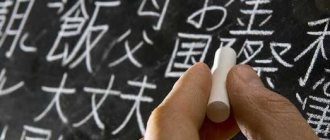Politeness is a second religion for the Japanese. Even a foreigner just starting to learn the language of the Land of the Rising Sun knows that there are several ways to say thank you in Japanese. The choice of remark depends on the relationship with the interlocutor, the age difference, and the characteristics of the situation. Let's look at how to say thank you in Japanese, how to respond politely and not get into trouble by choosing a remark that is appropriate to the situation.
The Japanese are very polite people
Several ways to say "thank you" in Japanese
First, we'll look at the most classic ways to express gratitude in Japanese. They are easy to learn because they combine only three words.
In addition, I will teach you how to say “thank you” in the Kansai dialect, which is spoken in the Kyoto and Osaka regions.
“ARIGATO” – A SIMPLE “THANK YOU”
ありがとう。 Arigato. Thank you.
"Arigato" is the easiest way to say "thank you" in Japanese. I advise you to use this term only when communicating with people you already know. But, nevertheless, you should not pronounce it when addressing those whose professional or social status is higher than yours.
“DOMO” – FRIENDLY “THANK YOU”
どうも。 Domo. Thank you.
"Domo" is the shortest way to express gratitude in Japanese. It is even less formal than arigato. Therefore, it can only be used when communicating with close friends.
“DOMO ARIGATO” – “THANK YOU SO MUCH”
どうもありがとう。 Domo arigato. Thank you very much.
"Domo arigato" means: "Thank you very much." in Japanese. The combination of "domo" and "arigato" has the effect of increasing gratitude.
“ARIGATO GOZAIMASU” – FORMAL “THANK YOU”
ありがとうございます。 Arigato gozaimasu. Thank you.
"Arigato gozaimasu" is a more polite form of "arigato". This is a more common form of gratitude when speaking to someone who has a higher professional or social status.
“DOMO ARIGATO GOZAIMASU” – FORMAL “THANK YOU SO MUCH”
どうもありがとうございます。 Domo arigato gozaimasu. Thank you very much.
Yes! The combination of all the words we have learned so far makes up the expression “domo arigato gozaimasu.” This phrase is a formal version of "domo arigato".
“OOKINI” – “THANK YOU” IN OSAKA
大おおきに。 Ookini. Thank you.
"Ookini" is an expression that is only used in the Kansai area, especially Osaka. Japan also has many dialects. The most famous of them is Kansai.
Previously, "ookini" was an adverb that was used together with "arigato". Namely, "ookini arigato" had the same meaning as "domo arigato". Over time, "ookini arigato" was shortened to simply "ookini".
"Ookini" is used in Japanese not only to say "thank you" but also "please." This word can also be used in other common expressions:
- "Ookini gochisosan" , equivalent to "gochisosama deshita".
- “Ookini sumakhen” , it allows you to express deep repentance.
How to say "thank you" in Japanese to a friend
The phrase domo arigato can be used to thank your friends and acquaintances, as well as restaurant waiters and sellers. But you should not use this phrase when communicating with your boss or at official receptions. どうも有難う - domo arigato - domo arigato - thank you
You can also use the well-known arigato, which is a rather familiar expression. You can use this word when communicating with friends and relatives, as well as with people whose social status is no higher than yours.
有難う or ありがとう - arigato - arigato - thank you
There is another form of friendly gratitude that is more polite than arigatou: domo. We can say that this is something between familiarity and formality.
In general, the word domo means “very”, but is perceived as “thank you”, naturally, depending on the context.
This expression can be used when talking with a boss or teacher, or even at an official reception. However, if you need to be as polite as possible, then it is better to use the expressions discussed above, for example domo arigatou gozaimasu.
どうも - domo - domo - thank you
“Arigato gozaimashita” - gratitude for the work done
ありがとうございました。 Arigato gozaimashita. Thank you for what you did.
"Gozaimasu" is a verb. Verbs in Japanese also have a past tense form. "Gozaimasu" becomes "gozaimashita" in the past tense. Therefore, it is better to use “arigato gozaimashita” instead of “arigato gozaimasu” when you want to thank someone who has just done something for you.
For example, you are at the checkout counter of a store. The cashier takes your money and gives you your purchases. In this case, you can tell him "arigato gozaimashita" for everything the cashier did before handing you your bags.
The same rule applies to “domo arigato gozaimasu”. You can say "domo arigato gozaimashita" when you want to thank someone for something they have done.
Many ways to say “thank you” in Japanese
This publication was started on November 24th, US Thanksgiving Day (the Canadian one has long passed) and the collection turned out to be quite thematic, because it contains many ways to say “thank you” in Japanese
So, let's go?
thanks for all
Variations depending on styles
colloquial )、いろいろいろありがとうな (simple colloquial) neutral)
Thank you very much
本当にありがとう(ほんとうにありがとう – general colloquial)、本当にありがとうございます( more neutral and formal compared to the previous version)
A simple conversational “thank you”
ありがとう, can also be heard among young people サンキュー from English. (thank you)
Thank you so much. I'm really, really, really grateful to you.
本当に、本当にどうもありがとう ございます
Well, thank you to excuse yourself:とにかくありがとう(ございます) - whatever it was, thank you (you)
Of course, the list would be incomplete withoutどうもありがとうございます– thank you very much. You can also “play around” with different parts of this stable expression of gratitude: you can say simply どうも、 or you can say a slightly more complicated どうもありがとう.
It is also worth mentioning the expression それはどうも - thank you for that. Or Thank you for this (with an emphasis on what gratitude is actually being expressed for).
Next is a slight complication of the designs. Gratitude for something (including an abstract-formal object) is used using the construction をありがとう
メールをありがとう(ございます) - thanks for the email
the answer (thank you for answering)
the wonderful gift . For more formality, it’s not a sin to add ございます
Let's move on, more complex and at the same time easy constructions (after all, they are passed at the JLPT N4 levels) and gratitude is expressed for a certain action:てありがとございますAlso don't forget :
おうえんしていただいてありがとうございます) - thank you for your support
Thanks for your advice
Thank you very much for telling us/ explained
Also even more formal thank you options:
be , grateful . The forms いただき / くださり do not work in Minna no Nihngo, but they can often be found in books on the business version of the Japanese language. Yes, we also took and constantly used this particular form in business Japanese courses.
You can “heavier” the above-mentioned constructions even more, and make them the most grateful to the depths of your soul and even deeper, using the word 誠(まこと) - to be sincere (in this case, with gratitude to someone)
Let's take a couple of the above examples.
( えいぶんおしえてくださり、まことにありがとうございます) - Thank you for interpreting this sentence in English
or, since the above examples were promised, it would be better to take アドバイスをしてくれて、まことにありがとうございます– very sincere thank you for the advice you gave
Well, now you can, so to speak, exhale a little - you can be grateful for something using the construction感謝しています(かんしゃしています)- “I am so grateful to you for the fact that...”, or more polite options: 感謝しております, as well as 心より感謝いたします, once I even had to see 感謝いたしております. And a few examples of cliché phrases below:
- I am grateful to you to the bottom of my heart
I am grateful to you from the bottom of my heart
I am so deeply grateful
Thank you, and I am forever obliged to you, you can convey it in the form恩に着る(よ) – おんにきる(よ)
もしそうしてくれたならいつまでも恩に着る- if you do this for me, I will be immensely grateful to you (I am obliged to die)
Working moments in gratitude
It is also worth making a branch from here into related gratitude: for work, for service or work rendered, and so on.
Firstly, for the fact that they did something to you and literally “saved” you, you say this:
助かりました (たすかりました)、 or less formal 助かった(たすかった) - oh, well, you really saved me = thank you
Continuing the theme of work, at work you can hear an expression familiar from Minna’s textbooks:ごくろうさま(です) , which will be written in kanji as ご苦労様です. Literally, “thank you for your work” = “I really appreciate the effort you put into your work.” It happens that the boss will casually throw out just ごくろう, but in anime and everyday speech-slang (for example, in the same tweets) he can slipご苦労さん(ごくろうさん)、or even ご苦労チャン (ごくろうちゃん) , and the other day we even metご苦労君 (ごくろうくん) . All these expressions are “thank you” for the work. However, it is worth remembering that only theごくろうさま(です) , i.e. you should remember to whom and in what setting gratitude is given for the work.
And also, at the same rate, it’s worth recalling that ご苦労様です is said by superiors or colleagues of higher status. And only friends can throw a malicious 「はい、はい、ご苦労チャン」 - Okay, okay, you are MALADES, thanks (informal language is used specifically in the Russian version)
Much more common thank you and “goodbye” among work colleagues
Thank you, you did a good job and further on the context (
おさきにしつれいします). In general, according to this site, the expression お疲れ様 is used regardless of position and status “above-below”. But, it’s better to say お疲れ様です to newcomers at work.
It seems that the work chapter on how they say thank you (and in fact this is a harbinger of “goodbye” at work) has come to its logical conclusion. Although it is worth noting thatお疲れさん、and お疲れちゃん can also be found in slang, they are also used to playing with nominal politeness suffixes, as we saw above in the example with ごくろうくんom.
Now there is a rather interesting topic, which is covered at least in manga comics published by educational literature publishers, that, say, words of apology (usually the word すみません)、 can express gratitude, i.e. thank you. This is worth dwelling on in more detail .
So, the wordすみません( and with it the more colloquialわるい、すまないand the very colloquial male dialectわりぃ, which is often combined with the corresponding particle な) can mean, oddly enough, “thank you.” Of course, here, as in many of the examples above, context is very important. Of course, we are also accustomed to the fact that すみません means “sorry,” but there are situations in which this same “sorry” is equated to “thank you.” So, the context of such expressions is that by your request (or something else) you caused your interlocutor trouble and discomfort (for example, you asked him to call early and wake him up, you borrowed an umbrella from him or her, you asked him to drop everything and, say, bring it from the warehouse box, asked to help with lunch, etc., where you burden your friend with your cravings. The person agreed and you can say すみません、 well, the guy can generally sayわりぃ- fans of manga and anime are aware of this tradition).
Be that as it may, formal or not, the form means “thank you.”
You can also, in some cases, hear different “transformer phrases” from the words of gratitude that have already been discussed in this publication: for example, you can hearどうもすみません、ありがとうございます. Just like that!
Since we were talking about すみません as a “thank you”, it is also worth including in this list恐れ入ります (おそれいります) - “thank you”. However, this expression is not for everyday speech. You will see it in reference books on Japanese business vocabulary language. You can often see this on sites where technical support or custom service communicates with their clients (business representatives can use this expression in relation to clients). It is believed that恐れ入ります is a mega-polite form of すみません. However, reference books indicate the meaning of 恐れ入ります only as a “thank you,” while すみません is also “sorry.”
This concludes the paragraph on apologizing as a “thank you” as well. However, the gratitude does not end there. Since we started talking about business above, it’s worth mentioning small businesses and shops where you can hear:
, come visit us again (he sends off words of gratitude to his client, who I just bought something in a shop).
In fact,まいどis a short form of毎度あり, and this form in turn is a short form of毎度ありがとうございます. The meaning of all phrases is the same: gratitude to customers who constantly come to your shop or cafe. It is also easy to remember this expression by the fact that毎度、まいど – “every time”, in other words, gratitude for every new visit that you pay to the owners of the business (also, in some contexts the author of this message saw the translation “it’s always a pleasure to do business with you” , although in essence this is not a business partnership, but work with the clientele, on which the business owner, oh, how much he depends).
Well, since we were talking aboutまいど、, it’s worth remembering the Kansai expression of gratitude まいどおおきに - thank you very much (this is in relation to clients). Or simply おおきに – thank you in the Kansai region in general. By the way, おおきに is in turn an abbreviation forおおきにありがとう, so that in Kansai they also say ありがとう;).
Modern and ancient “thank you”
And, since we are already talking about dialects, it is worth remembering “samurai-go” (武士語(もののふ語)) – archaic Japanese, which is inherent, according to evidence of samurai speech. Also, a characteristic set of phrases is used by otaku who study the culture of “bushi ", and fans of manga, anime, or dramas about samurai (or all together). Moreover, they are fans to such an extent that they use this set of phrases and grammatical expressions in everyday speech. So, instead of words of gratitude, if we are talking about 武士語, you can hear忝い、辱い- which are pronounced likeかたじけないand mean “huge gratitude”, “thank you”.
Well, since we remembered the archaic form of gratitude, it’s worth remembering slang. What can you say thank you for on the Internet?
フォロバあり/ ふぉろばあり– thank you for following (in particular, this applies primarily to Twitter)
ファボあり/ ふぁぼあり– thank you for liking my tweet (added my post to favorites)
リツイあり– thanks for the retweet
おはリプあり– say “good morning” in response to the morning greeting and at the same time thank you for something
おはあり– good morning and thank you!
おやあり– good night and thank you
おつあり– another slang for お疲れ様+ありがとう – you did a good job, thanks, well done
ほかてらあり– Thank you for telling me to “enjoy your bath”
So the Japanese youth are having fun, that is, thanking them
As you can see, in Internet slang ありがとう、 is shortened to あり、, as has already been done in まいどあり.
Well, now it’s time to start a new chapter of this message. Thank someone for the result achieved or hopes realized. This is expressed in the grammatical form found in textbooks for levels N3-N2 -のおかげ(で、だ、です)。More details - in the cheat sheet on this site or in textbooks. Just one example will be given here:
あなたのおかげで私が儲かる- Thank you - I have a benefit (only thanks to you I have income).
However, although infrequently, おかげ can be pronounced in a negative, malicious sense, so be careful:
Well, thank you, I'm late now. (this can be heard, again, in anime or simple speech, of course, examples in textbooks hardly illustrate this with examples).
Praise and how to thank for it
Well, and finally, an important “thank you” in response to a compliment: if you were praised, then you say ...そんな(yes, what are you, what are you, what are you... I am... I... just). But essentially this also applies to “thank you” for your compliment. Well, and a few more polite and formal options:ます – thank you for the praise . But another cliche phrase will be even more modest:お褒めいただき恐縮です (おほめいただききょうしゅくです) - I am embarrassed and touched by your praise. And also the quite often used phraseも worth yours at all praise (you are too wasteful in complimenting me). Well, and another cliché option : “Thank you” in response to praise and compliments.
If you notice that some fairly common and very important “thank you” was missed, please inform the author of the community (preferably VK). Thanks in advance everyone.
By the way, some of these phrases will be useful to those who are preparing to listen in Japanese. Of course, the compilers of exam tests do not take into account slang and samuraigo. But other cliche phrases may “light up” in the listening section of short answers (3 answer options)
If you find an error, please select a piece of text and press Ctrl+Enter.
Share on social media networks
RќСЂР°РІРёС‚СЃСЏ
How to say "Thank you for..." in Japanese
We have already looked at the most common expressions of gratitude in Japanese. Now it's time to study a little grammar of the language. In this part, you will learn how you can thank someone for something specific.
NOUN + ありがとう
メッセージありがとう。 Mesezhi arigato. Thank you for message.
All you need to do is add the name of the item for which you want to thank the interlocutor before the “arigato”.
VERB + ~くれてありがとう
Tetsudate kurete arigato (gozaimasu) . Thank you for your help.
This method may seem much more difficult to pronounce, but it allows you to use verbs. In this case, you need to conjugate the verb to the form て and add “kurete arigato gozaimasu”. As in the previous examples, "gozaimasu" can be skipped if you are talking to a friend.
How to say thanks in Japanese in different situations
If you are treated to dinner, then before starting the meal you need to say itadakimasu, this is the equivalent of our “bon appetit”. And after having dinner, it is customary to say gochisou sama deshita.
いただきます - itadakimasu - itadakimas - bon appetit
ごちそうさまでした - gochisou sama deshita - gochiso sama deshita - thank you, it was delicious
When the work day is over, you can say otsukaresama desu, which roughly translates to “thank you for a good day at work/thank you for your hard work.” Literally it will be “you are very tired from work.”
With a phrase like this, you express your gratitude for hard work and tell the person that he has worked hard all day and now it is time to rest.
お疲れさまです - otsukaresama desu - otsukaresama des - thank you for a good day at work
Osaka has its own dialectical expression for expressing gratitude: ookini. It means "thank you" or "please." Ookini should be used at the end of a sentence for polite address.
If earlier this word was used together with arigatou, that is, ookini arigatou, today the shortened version ookini is popular.
おおきに - ookini - ookini - thank you
"Thank you" in Japanese slang
“SANKEW” – IN THE ENGLISH MANNER
サンキュ。 Senkyu. Thank you.
"Senkyu" is a phonetic transcription of "Thank you" in Japanese. This expression is used by young people.
This conversion originated from the Japanese alphabet used to transcribe foreign words. The name of this writing system is katakana. It is a syllabary that cannot transcribe all the sounds of the English language. This is why the Japanese pronounce this word as "senkyu".
HOW TO THANK YOU ONLINE
There are many ways to say "thank you" in Japanese on forums or chat rooms such as LINE and the like. Below is a selection of the most used expressions of gratitude on the Japanese Internet:
- あざす。 “Azusu.”
- あーと。 "Ato".
- ありー。 "Arias".
As you can see, most of them are a short version of "arigato".
How to say "thank you" at work in Japanese
The world of workers has its own Japanese language. Many words and phrases are used only there. The same applies to “thank you.”
“OTSUKARESAMA” – “THANK YOU FOR THE WORK DONE”
お疲つかれ様さまでした。 Otsukaresama deshita. Thanks for the work you've done.
“Otsukaresama” is an expression that is always present in Japanese work culture. The Japanese use it to thank their colleagues for their work.
“OSORE IRIMASU” – A WAY TO THANK CLIENTS
おそれいります。 Osore irimasu. Thank you, dear client.
Osore irimasu is rarely used in Japanese daily life. However, it is an expression that is spoken at work. It is often used when people want to thank their clients.
This expression is often considered a more polite form of "sumimasen". But they can't apologize. “Osore irimasu” can also be used when you are incompetent in some matter and thank the person who explained it to you.
Expressions used in certain circumstances
“GOCHISOSAMA DESHITA” – “THANK YOU FOR THE TREAT”
御ご馳ち走そう様さまでした。 Gochisosama deshita. Thanks for the treat.
“Gochisosama deshita” is gratitude to the one who prepared your food. This expression can be used in restaurants. It should be said after eating. It is best to say it when you have paid and leave the establishment.
“SUMIMASEN” SHOULD BE SAID TO THE ONE WHO CORRECTED YOUR ERROR
すみません。 Sumimasen. Thank you and sorry.
The Japanese rarely say “arigato gozaimasu” to thank the person who corrected their mistakes. They prefer "sumimasen" instead. It literally means "Forgive me" in Japanese. This way your interlocutor will understand that you regret the mistake and thank him for his vigilance.
How to respond to “Arigato gozaimasu”?
There are also several ways to respond to gratitude in Japanese. The next two can be used under different circumstances.
“DOITASHIMASHITE” – “PLEASE”
どう致いたしまして。 Doitashimashite. Please.
The easiest way to say “please” in Japanese is “doitashimashite.” In fact, it is a very long but very common expression in Japanese.
“KOCHIRA KOSO” – REVERSE THANK YOU
こちらこそ。 Kochira koso. No, thank you. I should be the one saying “thank you.”
You can thank someone who just said “thank you” by replying “kochira koso.” By pronouncing this expression, you make it clear to your interlocutor that you are indebted to him, and not vice versa.
How to say: “Thank you, no need.” in Japanese
There are many ways to say, “No thanks.” in Japanese. We will tell you about four of them. They are arranged from the most formal to the most friendly.
“KYOKO DESU” – POLITE WAY
いいえ、結けっ構こうです。 Ie, kyoko desu. Thank you, that's enough.
Keko is an adjective that means “enough.” When you say, “Ie, keko desu,” you literally mean that what you already have is enough for you. Typically this expression can be used when you are ordering at a restaurant or bar in Japan.
"Ie" literally means "no." This part can be omitted because saying “no” is considered impolite in Japanese. So it's better to just use "keko desu" if you don't want to seem arrogant or rude.
“DAIZHOBU” – WHEN EVERYTHING IS OKAY
だいじょうぶ。 Daijōbu. I'm fine.
You can say that everything is fine using the expression: "daijobu". This expression is much less polite than "kyo desu". I advise you to use "daijoba" only with close friends.
"AI" - SHORT VERSION
いいです。 Ii desu. I'm fine.
"Ii" literally means "good." This expression is even less polite than "daijobu". It can be used with someone you don't like or when you are upset. For example, this is how you can respond to someone who pesters you on the street or tries to apologize.
Japanese lessons online
It would seem that the answer is quite obvious and familiar to everyone - ありがとう(arigatou). It’s simple, you might think, but you won’t be entirely right. There are several levels of politeness in the Japanese language, and each of them is suitable for its own specific situation. Let's look at each of them separately:
1. I just want to thank a friend:
then conversational options are suitable for you.
- ありがとう - arigatou
- どうも - doumo
- サンキュー - sankyuu (thank you)
You can use these expressions to communicate with friends, family members and people of equal status, age or junior to you.
For those interested in kaji: the kanji for arigatou is 有難う.
どうも(doumo) - the word itself means “big”, “very”, but in colloquial speech it is understood as a short “thank you”.
サンキュー(sankyuu)― it is not difficult to guess that this word is borrowed from the English language. Thank you, pronounced in the Japanese manner, is used everywhere and is very popular among young people. And writing it on the Internet and mobile phone saves time and symbols; all you have to do is type 3-9 (the numbers 3 and 9 are read san kyuu in Japanese).
2. I need a formal option, I want to thank an older person or a work colleague:
Well, the more polite the form, the longer it is.
- ありがとうございます - arigatou gozaimasu
- Doumo arigatou gozaimasu
- arigatou gozaimashita
As you probably noticed, gozaimasu and gozaimashita were added to our “thank you”. What is it and why do we add it there?
Gozaimasu is the present tense form of the verb gozaru (to be, to exist). It is used as a polite expression, which means that you are respectful of your interlocutor.
Therefore, often in formal conversations, in conversations with strangers and people older in age or status, you will hear gozaimasu.
ありがとうございます(arigatou gozaimasu) - standard polite gratitude, if you are in doubt about which form is best to choose in order to thank a person, stick to it and you will never go wrong!
Thank you very much. As we said above, doumo is “big,” and adding it to the standard thank you makes the phrase even more polite and emotional.
Everything is clear with these two, you tell me, what is gozaimashita? Why is it needed and how is it different from gozaimasu?
And I will be happy to explain to you that:
1. Gozaimasu is the present tense form of the verb, and gozaimashita is the past tense form.
2. We will use the past form of gozaimashita if the person we are thanking has ALREADY fulfilled our request, has done something good for us, or something good has happened to us in the past thanks to him. That is, he ALREADY did a great job and we definitely need to tell him arigatou gozaimashita for this!
3. Okay, this is all clear, but what would you say in Japanese please?
どういたしまして - dou itashimashite
Dou itashimashite “please” is our standard option, which can be used to respond to any gratitude, formal or not.
きにしないでください - ki ni shinaide kudasai
Don't worry about it, don't worry or it wasn't difficult for me.
But, in informal situations and with friends, it is much better to simply say:
オッケー - okke- (okay)
That is, okay, of course, what are we talking about?









